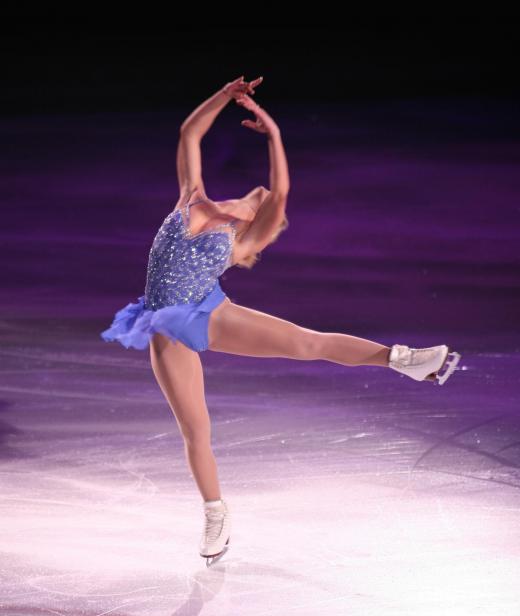Hockey skates and figure skates are interchangeable for only very basic, beginning moves such as learning to balance, stop and stroke on skates. Beyond that, these skates are designed very differently and are used for different purposes. Toe picks, blades and shape vary greatly between figure and hockey skates.
Figure skates are longer in shape than hockey skates of the same size. The skates are designed differently for different balances of weight. In figure skating, some moves need more weight placed on the heel while other moves need the weight balanced on the toe. Hockey skates are designed to fit the skater as comfortably as possible and are made for maximum speed.

The blades on figure skates differ greatly from the blades on hockey skates. These blades stick out more from the skate, which can be dangerous during checking in hockey and could cause injuries. The blade on a hockey skate is not only shorter, but narrower and more lightweight. Whereas most figure skate blades are mounted right onto the boot and replacement blades may often be added, hockey skate blades are usually soldered on and the blades are usually not replaceable.

It's important to note that the blades also vary within the different groups of figure and hockey skates. For example, the blades on goalie skates are designed for moving around in the goal area and are not made for speed strokes over a larger area like other hockey skates. Skates made for ice dancing feature safer, shorter blades. The curvature of the blade varies between the different kinds of figure skates and free style skates are completely different from dance skates.

Toe picks, or the notches at the tip of skate blades near the toe, are another crucial part of skate design. These are only found on figure skates, where they are used for jumps and spins. These complex toe picks skates makes them more difficult to master than basic hockey skates. It is possible to do some jumps in hockey skates, but the maximum lift and effect isn't usually possible without specialty blades. Free style figure skates have larger toe picks than regular skates because of the jumps performed in free style skating.
